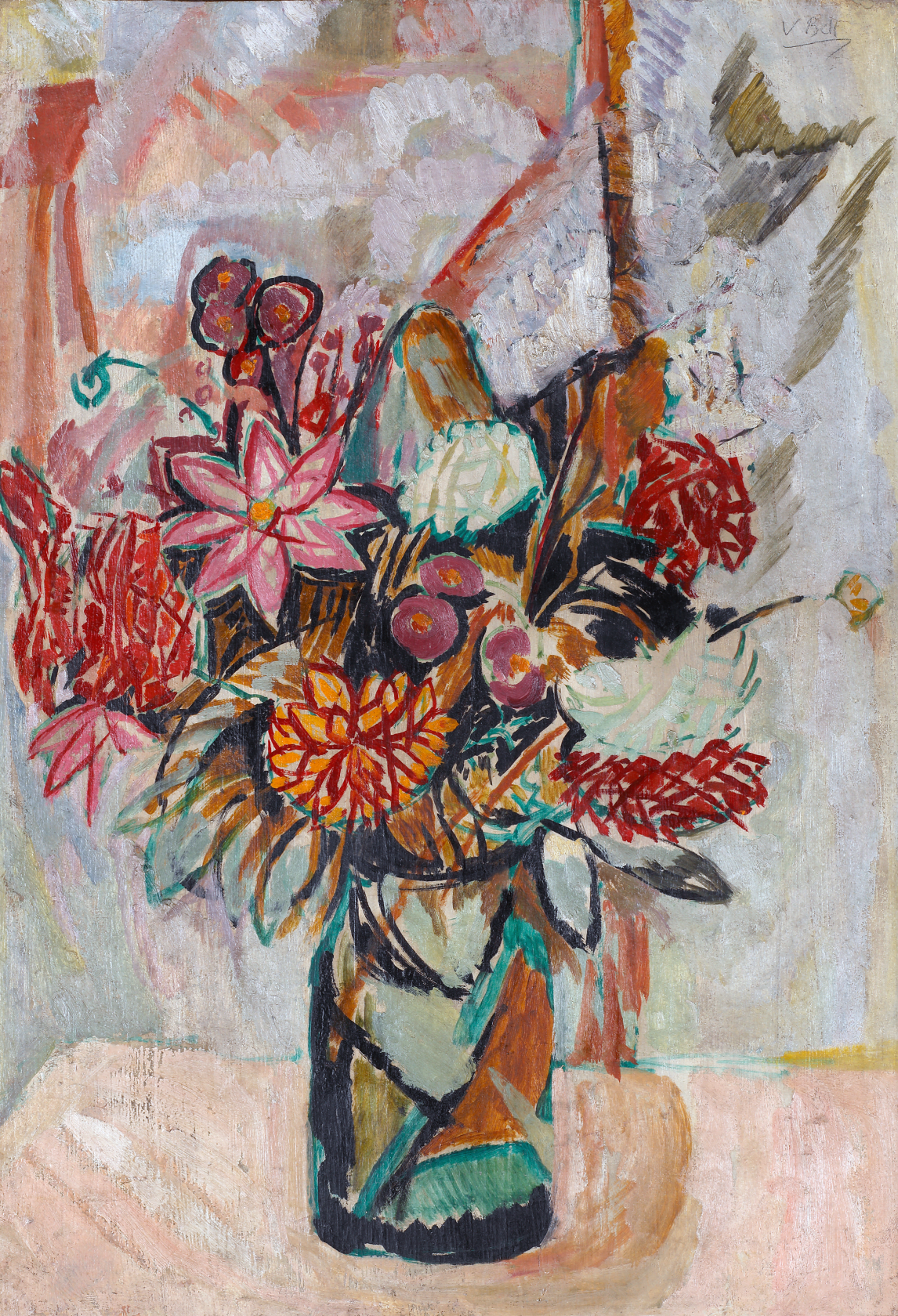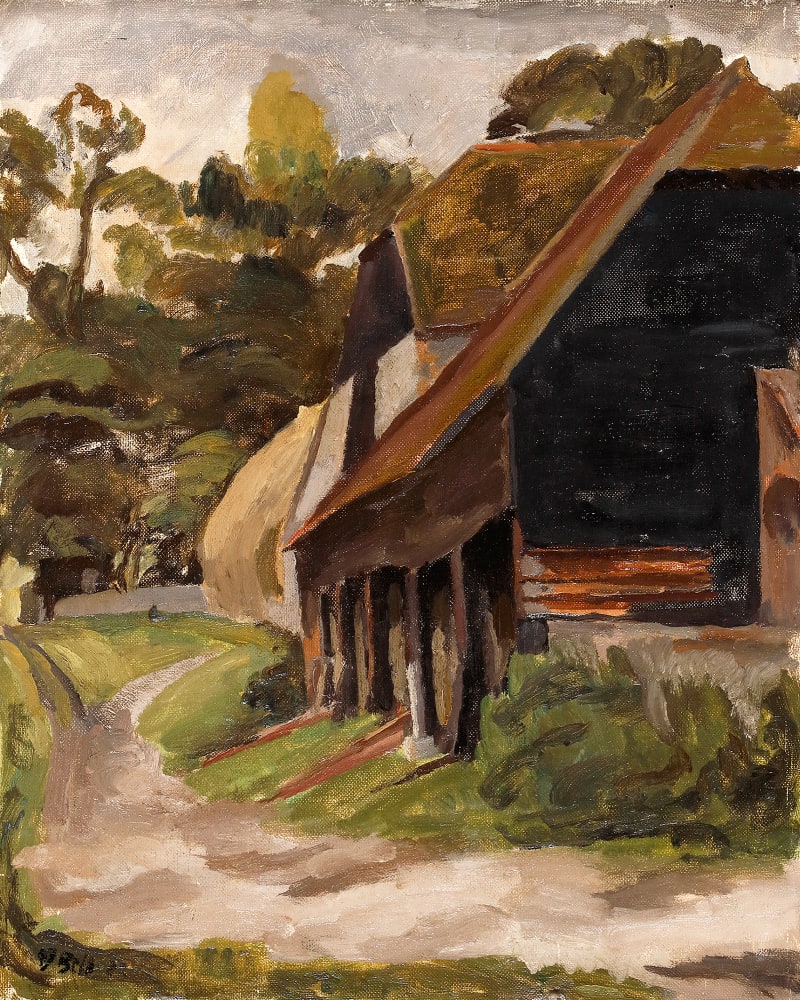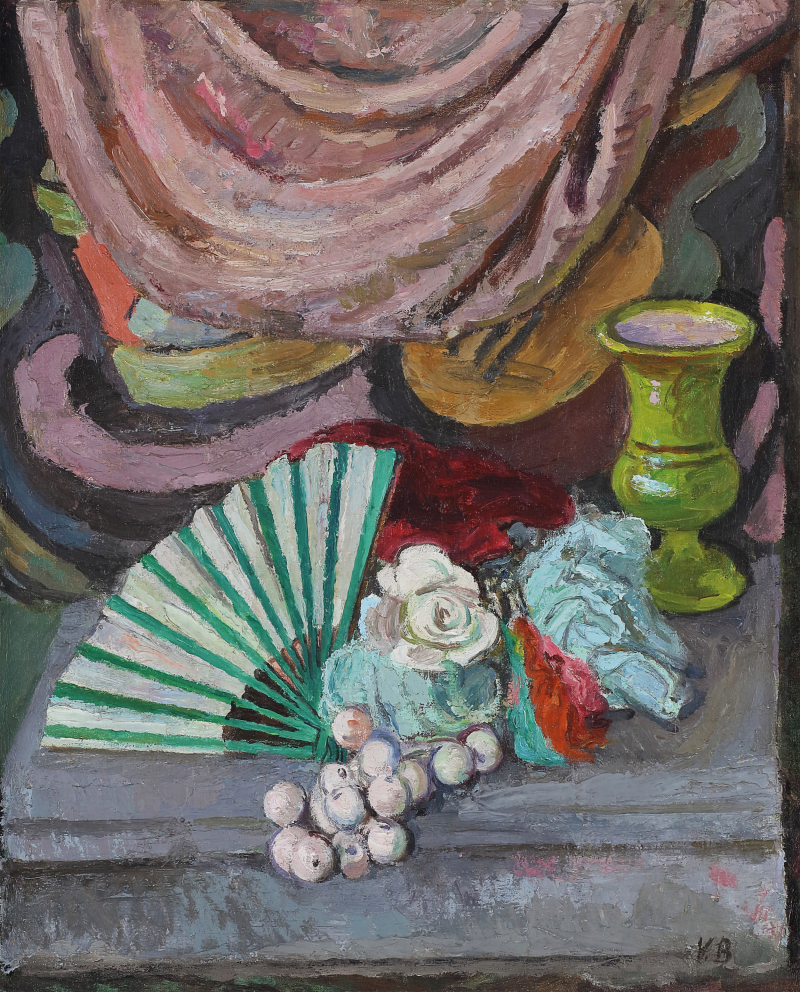This profoundly significant still-life by the Bloomsbury forewoman, Vanessa Bell, positions her at the forefront of British modernism. The daringly avant-garde perspective, calligraphic brushstrokes and bold colours belonged to an artistic innovation in Britain that both captivated and outranged contemporary sensibilities.
Bell’s artistic practise underwent a transformation in 1910, the year Roger Fry whipped up a furore with his exhibition Manet and the Post-Impressionists at the Grafton Galleries. It featured vividly coloured modern works by artists such as Van Gogh, Gauguin and Cézanne and attracted over 25,000 visitors over two months. The exhibition challenged established artistic traditions of form and beauty and at the same time enthused a younger generation of artists - particularly Bell. She began to experiment with European artistic trends, the effects of which are evident in this still-life which can be described as a brilliantly personal form of English cubism. Colourful, dynamic background strokes evoke a familiarity with Cézanne. A bold subjugation of the organic...
This profoundly significant still-life by the Bloomsbury forewoman, Vanessa Bell, positions her at the forefront of British modernism. The daringly avant-garde perspective, calligraphic brushstrokes and bold colours belonged to an artistic innovation in Britain that both captivated and outranged contemporary sensibilities.
Bell’s artistic practise underwent a transformation in 1910, the year Roger Fry whipped up a furore with his exhibition Manet and the Post-Impressionists at the Grafton Galleries. It featured vividly coloured modern works by artists such as Van Gogh, Gauguin and Cézanne and attracted over 25,000 visitors over two months. The exhibition challenged established artistic traditions of form and beauty and at the same time enthused a younger generation of artists - particularly Bell. She began to experiment with European artistic trends, the effects of which are evident in this still-life which can be described as a brilliantly personal form of English cubism. Colourful, dynamic background strokes evoke a familiarity with Cézanne. A bold subjugation of the organic plant forms indicates the inspiration of Matisse. Their modernist design, together with the vase, prophesises the productions of the Omega Workshops established in the following year by Fry, Bell and Duncan Grant. It is also interesting to note that the company produced artificial painted paper flowers for interior design.[1]
In 1912, Bell exhibited in Fry’s Second Post-Impressionist Exhibition. Two of the works she exhibited were painted at Asheham House, home to her sister Virginia Woolf, and it is likely that this work was also painted during this stay. Whilst at Asheham, invigorated by Fry’s first exhibition, Bell worked furiously and quickly, painting landscape views, interior scenes, portraits and still-lifes. During the latter half of their stay, the weather worsened, and Vanessa and Duncan remained indoors painting still-lifes and interior scenes. In the works produced during this period, Bell reduced the complex forms of her subject into a series of sharp, geometric shapes whilst using colour to enrich and enliven the composition.[2]
Still-life of Dahlias, Chrysanthemums and Begonias remained in Bell’s possession until her death, after which it was inherited by her daughter, Angelica. The work for a long period hung in Bell’s London home, 46 Gordon Square. The leading ballerina of the early twentieth century, Lydia Lopokova, wife of Maynard Keynes, was in fact photographed with it visible in the background [fig. 1].
In 1939, at the outset of the Second World War, Bell moved to Charleston Farmhouse, East Sussex, which she and Grant had rented since the start of the First World War.[3] Grant and Bell transported their favourite paintings from London to hang on the walls at Charleston – including this still-life [fig. 2]. This decision could be the reason for its survival. Many of Bell’s early works were lost in 1940 when an incendiary bomb hit her London studio, 8 Fitzroy Street. Consequently, only a handful from this date survive, of which this can be described as a preeminent example.
[1] See: Roger Fry Still Life with Omega Flowers 1919. Available via: https://upload.wikimedia.org/wikipedia/commons/8/8c/Roger_Fry_Still_Life_with_Omega_Flowers.jpg
[2] See: Vanessa Bell Nosegay 1912 in Hendra L., and Smith, E. Charleston: The Bloomsbury Muse. London: Paul Holberton, p. 42.
[3] For more information on Charleston Farmhouse, see Hendra, L., and Smith, E. (2021) Charleston: The Bloomsbury Muse. London: Paul Holberton.






